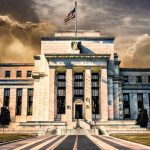“People who treat other people as less than human must not be surprised when the bread they have cast on the waters comes floating back to them, poisoned.” ~ James Baldwin, 1924-1987, American Author
Central Banks’ Prime Directive: The Quiet War Against the Working Class
Nov 6, 2025
Inflation is not an act of God. It’s engineered. It’s the product of central banks that flood the system with money, claim it’s stability, and then watch ordinary people sink under the weight of rising costs while bankers collect their bonuses. The modern version of theft no longer needs guns or gangs—it runs through balance sheets, bond auctions, and policy statements written in bureaucratic Esperanto.
The Great Lie: Inflation as “Prices”
Ask a central banker what inflation is, and you’ll hear about “target rates” and “consumer baskets.” Ask a person buying groceries, and you’ll listen to the truth: everything costs more, and wages don’t keep up. But that’s not by accident. Inflation, stripped of its academic perfume, means one thing: too much money chasing the same goods. The money supply balloons, but real output doesn’t. The result is dilution. Your savings are quietly shaved down like ice melting in a warm room.
In the last twenty years, the U.S. money supply (M2) has grown from roughly $4.7 trillion in 2000 to over $21 trillion in 2024. That’s not growth—it’s monetary doping. The national debt crossed $34 trillion this year, doubling in just over a decade. Meanwhile, median household income, adjusted for inflation, is barely above its 1999 level. The Fed calls it “price stability.” That’s like calling a house fire “thermal balance.”
Central banks print first, deny later, and when the inevitable price surge hits, they point fingers—supply chains, pandemics, wars, “greedy corporations.” It’s a theatre. You cannot inject trillions into a closed system and expect equilibrium. Every dollar they create is a claim on your time, your labor, your future.
The Prime Directive: Protect the Banks, Not You
The central banks’ first loyalty is to the financial system, not the citizenry. When a crisis hits, liquidity flows to Wall Street before Main Street. During 2008, they bailed out failing banks. During 2020, they backstopped corporate bonds. During 2024’s tightening cycle, they offered relief windows for overleveraged institutions, while consumer credit card APRs hit 24%, the highest in modern history.
You were told this was “monetary policy.” In truth, it’s triage for the elite. The Fed’s dual mandate—maximum employment and stable prices—has quietly evolved into a single purpose: maintaining asset prices. When stocks wobble, they intervene. When housing falls, they panic. But when wages stagnate for 70% of the population, they call it “productivity adjustment.”
In 2020, central banks added $10 trillion globally in liquidity. What did the average person get? A one-time stimulus check and higher rent. What did Wall Street get? The fastest asset bubble in history. That’s not capitalism—it’s controlled demolition, followed by taxpayer-funded reconstruction for the financial aristocracy.
The Hidden Tax
Inflation is the perfect tax. It punishes the saver, rewards the debtor, and disguises the theft through complexity. When your purchasing power erodes, there’s no headline, no bill, no protest. It’s silent. One dollar in 1970 had the same buying power as about $8.50 today. That means the government has taxed over 88% of your dollar’s value—without ever asking permission.
The cruelty is geometric. Inflation widens inequality because the poor live in cash, and the rich live in assets. When the money supply expands, asset prices rise first: stocks, real estate, fine art, Bitcoin, and luxury goods. Wages rise last, if ever. By the time the worker catches up, the ladder has already been pulled higher.
This is not a bug—it’s the operating system. Inflation allows debt-funded governments to pay yesterday’s bills with cheaper money. It allows central banks to inflate away liabilities. It will enable banks to lend into a bubble, get bailed out, and repeat the cycle. The middle class? They get the bill and call it “cost of living.”
How to Fight Back
You don’t fight inflation by tweeting about it. You fight it by starving the system of your dependence. Central banks win when you live on credit and lose when you live on cash and assets. The only meaningful rebellion left is financial self-defence.
- Live Below Your Means
Every dollar you don’t spend on consumer trash is a dollar that the debt machine can’t harvest. The economy thrives on your weakness. Don’t feed it. Live one or two standards below your income level. Wealth is built in the gap between earnings and consumption, not in the chase for yield. - Own What Can’t Be Printed
Hard assets remain the only honest hedge. Gold is up over 400% since 2003, even after corrections. Silver has lagged but remains historically undervalued relative to gold. When no one wants them, buy them. The masses mock metals at the bottom and worship them at the top. That’s your edge.One ounce of gold bought a fine suit in 1920. It still buys a fine suit in 2024. The dollar, in contrast, buys the tie. - Invest When Others Hide
Crashes are clearance sales for the patient. Every primary bull market in U.S. history began after mass despair—1932, 1982, 2009, 2020. You can’t time the bottom, but you can position yourself for the rebound. Study sentiment, not headlines. When fear spikes and everyone swears “it’s different this time,” history whispers otherwise.In March 2020, retail investors fled the market. Those who bought the S&P at its lows doubled their money within two years. That wasn’t luck. It was mass psychology inversion: doing the opposite of the frightened crowd. - Avoid Debt Like It’s Radiation
In an inflationary world, variable debt is a loaded gun pointed at your temple. Credit cards, car loans, adjustable-rate mortgages—they all siphon your future income at compounding rates. The less you owe, the less control they have. - Turn Off the Propaganda
The media sells obedience disguised as information. CNBC, Bloomberg, and financial influencers exist to keep you watching, not winning. Real investing starts where the noise ends—with independent thought and delayed gratification.
The Revolt Begins With Apathy
The greatest weapon against this system isn’t anger—it’s withdrawal. Stop playing their game. Stop believing that consumption equals freedom. You cannot out-earn inflation if your lifestyle inflates with it. You beat it by refusing to chase the illusion of more.
The banks want velocity—money moving, credit expanding, people borrowing. When you slow that down, you starve the machine. Inflation eats motion. Stillness is resistance.
This is not romantic rebellion; it’s arithmetic. You either own what inflates or you become what inflates. The system cannot punish what it cannot exploit.
Now let’s go deeper into practical rebellion—how to weaponise common sense, timing, and crowd behaviour to build wealth under a corrupt monetary regime. The markets are rigged, but human nature is more predictable than policy, and that is where your advantage lies.
How to Win the Inflation War: Mass Psychology, Asset Cycles, and Common Sense
Central banks control the money. They do not control the crowd. That is your battlefield. Inflation is a policy of dilution—your labour, your savings, your time—but crowd behaviour is your countermeasure. When you understand how people move under pressure, you stop being the mark and start becoming the maker. The game is simple: buy value when panic blinds the masses, hold patience when greed blinds them again.
1. Understand the Cycle: Panic → Euphoria → Amnesia
Every inflationary cycle runs the same emotional loop. It begins with panic (“cash is king”), then transitions to euphoria (“assets only go up”), and ends in amnesia (“no one could have seen this coming”). The crowd forgets faster than prices rise.
After 2008, money printing saved the system but hollowed out the middle class. By 2020, cheap money had inflated everything—tech stocks, real estate, crypto, collectables. People mistook liquidity for genius. Then 2022 arrived. Inflation hit 9.1%, the highest in 40 years. Central banks panicked, rates spiked, markets crashed, and retail investors once again learned the first law of mass psychology: you are not meant to win by following the crowd.
Now, as inflation “cools” and the public breathes relief, we stand in the same phase as 1976 or 2003—complacent, leveraged, and blind. This is the moment intelligent contrarians begin positioning for the next phase of inflation, the second wave, when governments realise debt cannot be paid with austerity and start printing again.
2. Hard Assets: The Currency of Defiance
If you want to protect your wealth from the central banks’ printing presses, hold what they cannot manufacture.
Gold and silver remain the ultimate test of independence. During the 1970s stagflation, gold rose from $35 to $850—over 2,300%. Silver climbed from $1.50 to nearly $50. In the 2000s, gold surged from $300 to $1,900 as debt and deficits exploded. These are not coincidences. Hard assets track one metric above all: faith in fiat.
Every generation ridicules gold during booms and rediscovers it during collapses. That’s your signal. Buy when the laughter is loudest.
If you can’t hold physical bullion, consider miners and streaming companies during depressed phases. They are leveraged plays on the underlying metal, though they require patience and iron discipline. In 2015, the gold mining index (GDX) bottomed near $13. By 2020, it had more than tripled. The pattern is brutal but predictable: the crowd abandons hard assets exactly when inflation is about to return.
3. Stocks After Carnage
The best stock markets are born from blood, not from optimism. Study 1982, 2009, and 2020. In each case, the media declared economic doom. Yet those who bought blue-chip companies trading below intrinsic value multiplied their capital as liquidity cycles turned.
The playbook is ancient:
- Wait for forced selling, not voluntary selling.
- Accumulate cash-flowing assets with real pricing power (energy, food, infrastructure, defense).
- Ignore “innovation” narratives when liquidity is contracting; buy fundamentals when credit is scarce.
The average investor buys headlines; the contrarian buys exhaustion. In 2022, tech stocks imploded. The Nasdaq lost a third of its value. Retail capitulated. By 2023–2024, those same names doubled. Not because of genius—because of math. Fear always overextends.
But do not confuse contrarianism with arrogance. It is not “betting against everyone.” It’s listening differently.
4. Psychology as a Weapon
To win against inflation, you must master two psychological edges: patience and selective indifference.
Patience means knowing that markets are emotional fractals. A panic looks large in the moment but microscopic on a 10-year chart. Indifference means ignoring 90% of news that exists solely to manipulate your dopamine. The system monetises your attention before it ever monetises your capital.
Watch how the masses behave during inflation. They scream for pay raises, demand credit relief, and then binge on consumer debt. Every cycle, the same. The more they borrow, the weaker their resistance. The strong quietly do the opposite:
- Cut liabilities.
- Accumulate liquidity.
- Buy fear, sell euphoria.
Mass psychology is the investor’s radar. When everyone celebrates, your radar blares a warning. When everyone despairs, your radar whispers opportunity.
5. Debt Is Not Wealth
Inflation seduces people into thinking debt is manageable because “money will be cheaper later.” That’s a trap. Rising inflation leads to higher nominal rates, and higher rates multiply debt service costs faster than wages rise. The average American household now pays $1,300 per month in interest expenses alone, according to the Federal Reserve. That’s a silent margin call on the working class.
If you want freedom, you must disconnect from the debt circuit. Drive a used car. Rent below your means. Pay cash where possible. Every dollar not owed is a piece of sovereignty reclaimed.
The banks profit most when you are stretched thin—mortgage, car loan, credit card, subscription. Break that cycle, and you remove yourself from the system’s control loop.
6. Inflation Is a Behavioural Game
Inflation punishes impulsive behaviour. It destroys those who chase status, timing, and comfort. It rewards the boring—the saver, the accumulator, the buyer of forgotten value.
The world worships consumption. That’s why inflation is unstoppable. Governments need inflation to erode debt; corporations need inflation to preserve margins. You can’t reform that system, but you can refuse to subsidise it.
How?
- Replace consumption with ownership.
- Replace entertainment with education.
- Replace speculation with patience.
Each act of self-restraint compounds into long-term leverage. You are not outsmarting inflation; you are starving its ecosystem.
7. The Winning Blueprint
If you strip away the jargon, wealth building under inflation is simple:
- Earn in strong currency.
- Save in hard assets.
- Invest after panic.
- Spend below trend.
- Refuse unnecessary debt.
- Ignore the noise.
This blueprint has worked since Rome debased its silver denarii and will still work when digital currencies replace cash. Human nature hasn’t changed—only the tools have.
Look back to 1933. The U.S. confiscated gold at $20.67 an ounce, revalued it to $35, and devalued the dollar 40% overnight. Those who held gold abroad preserved wealth; those who held dollars lost it. In 1971, Nixon closed the gold window—fiat currency was unleashed. Within a decade, inflation averaged 7% annually, and the S&P 500 delivered negative real returns. Yet gold holders multiplied their capital tenfold.
History isn’t subtle. The crowd loses faith just before the next inflation wave begins.
8. The Moral of the Fight
Inflation is not just economics—it’s moral warfare. It rewards debtors over savers, speculators over producers, liars over workers. It’s the slow corruption of honest effort. The central banks will not stop it because they need it. The only defence is to build parallel habits that cannot be inflated away: discipline, ownership, and foresight.
When everyone else blames “the system,” quietly profit from their denial. When they call gold barbaric, buy it. When they mock value investing, study balance sheets, when they line up for loans, pay yours off.
The war against inflation isn’t won with outrage or slogans. It’s won with silence, savings, and selective aggression.
Inflation steals from those who wait for rescue. It enriches those who plan for betrayal.
So plan.
Because the central banks may print your currency—but only you decide its worth.











